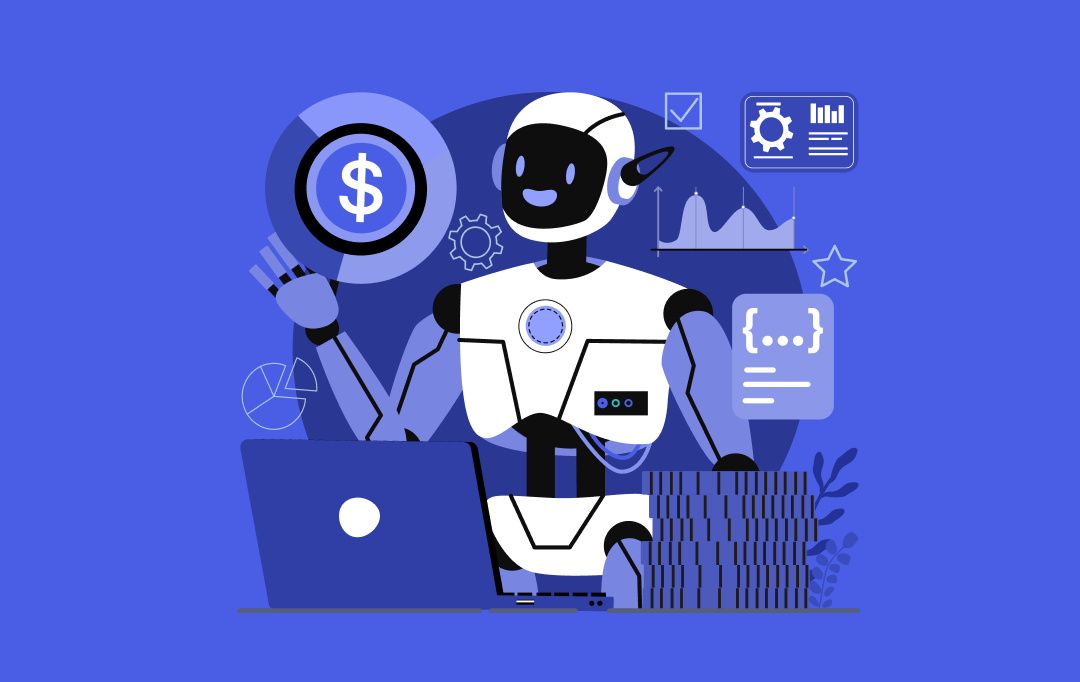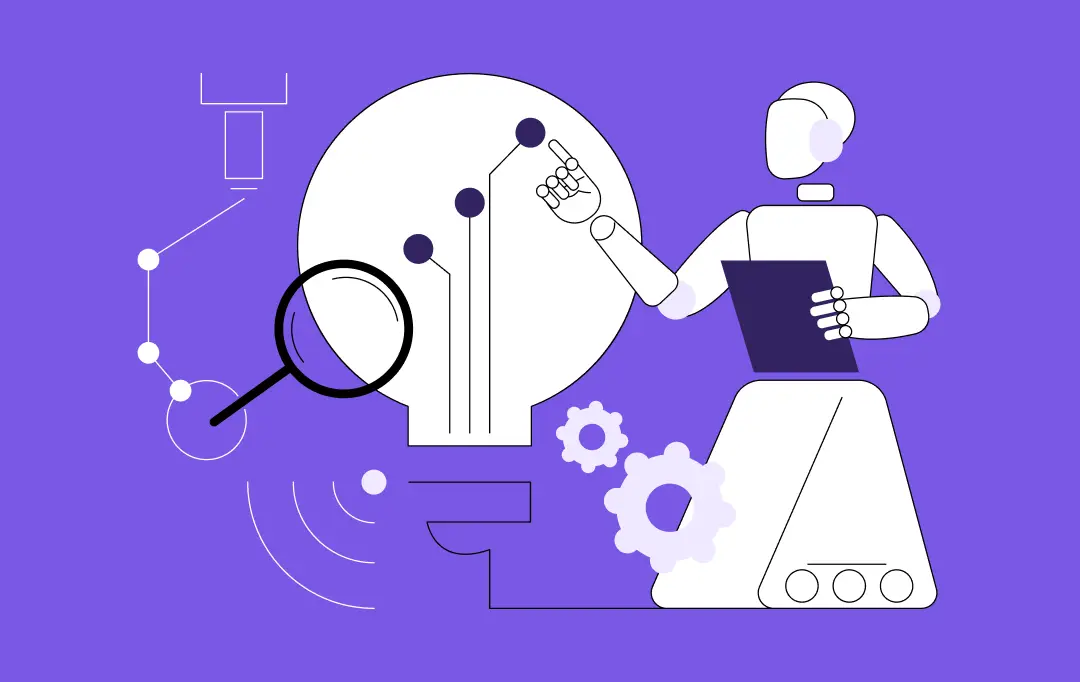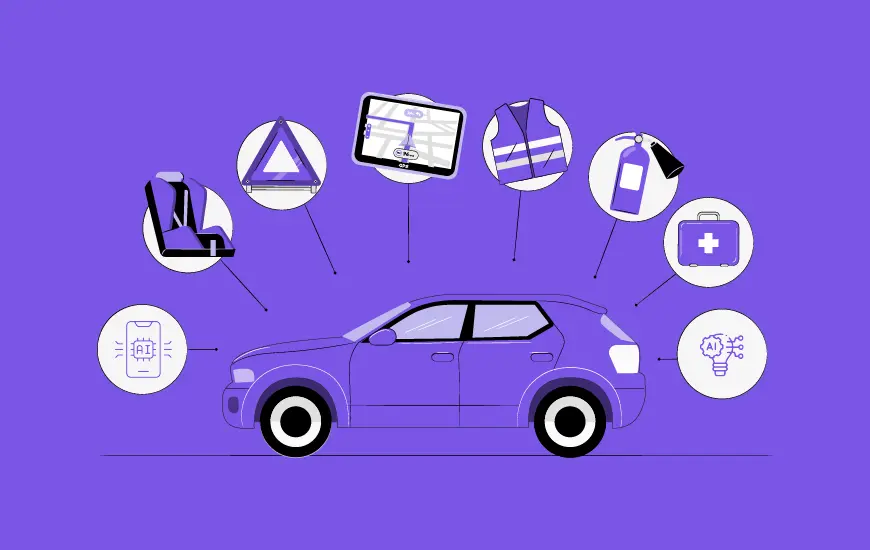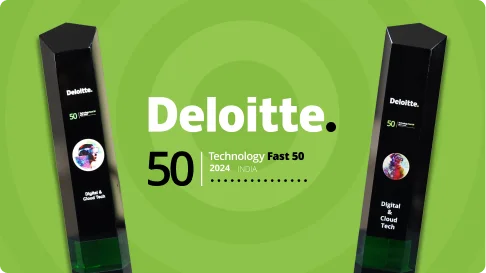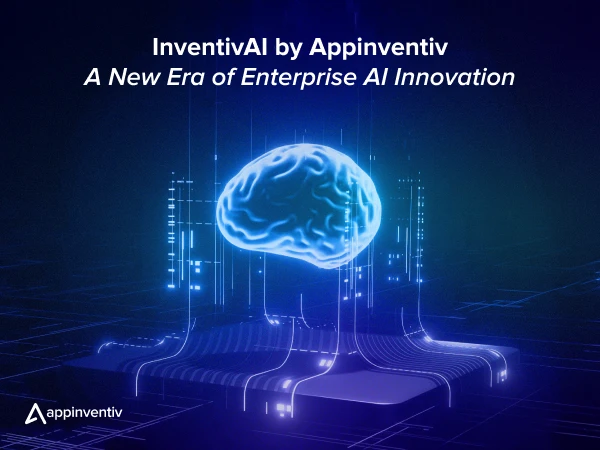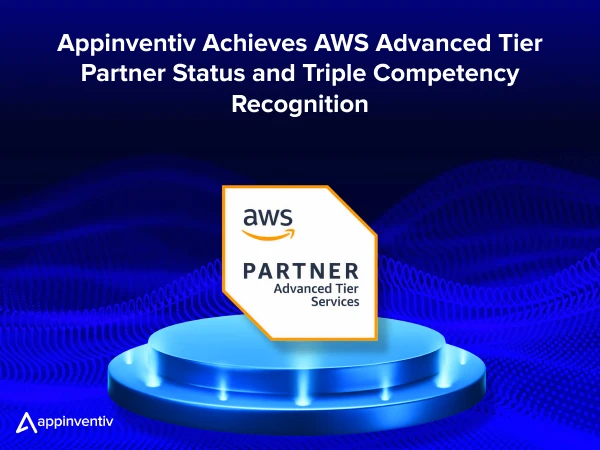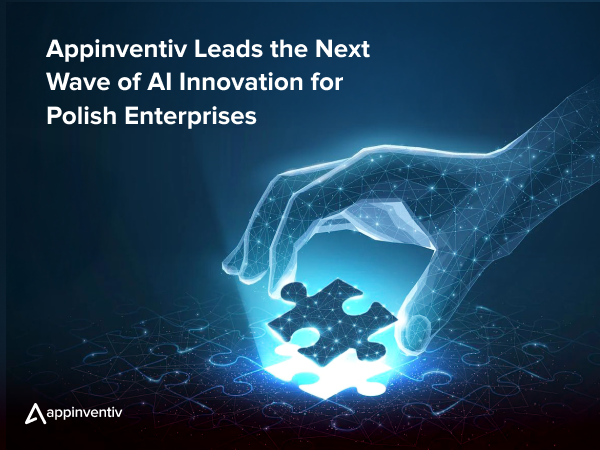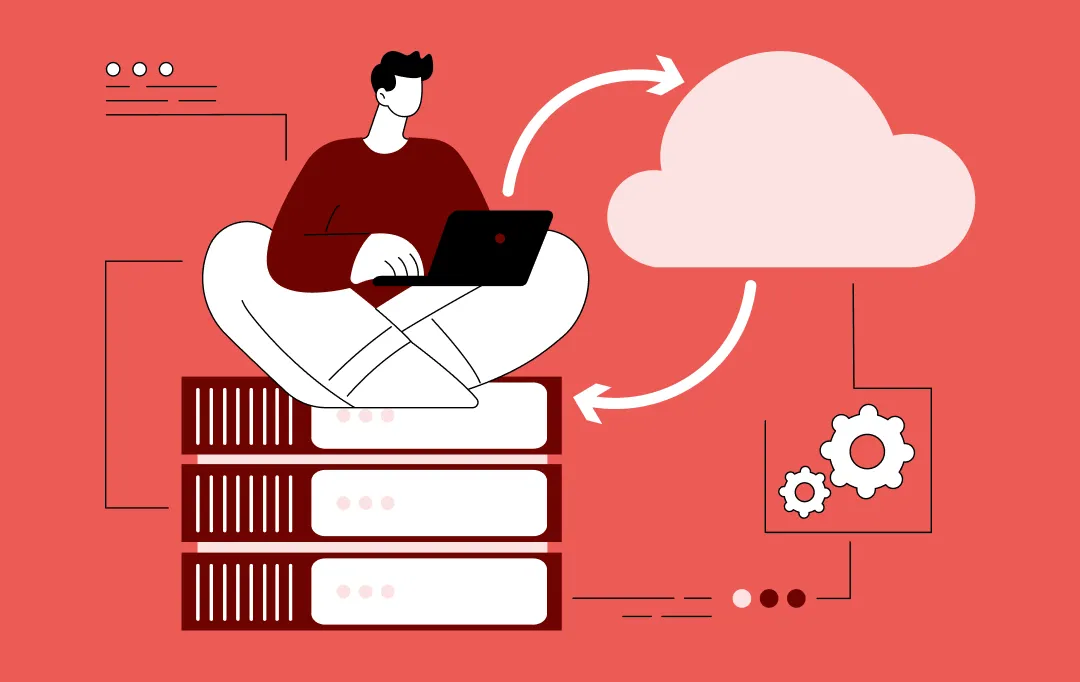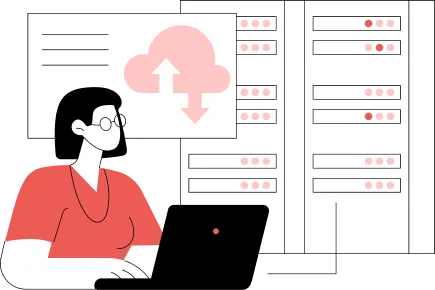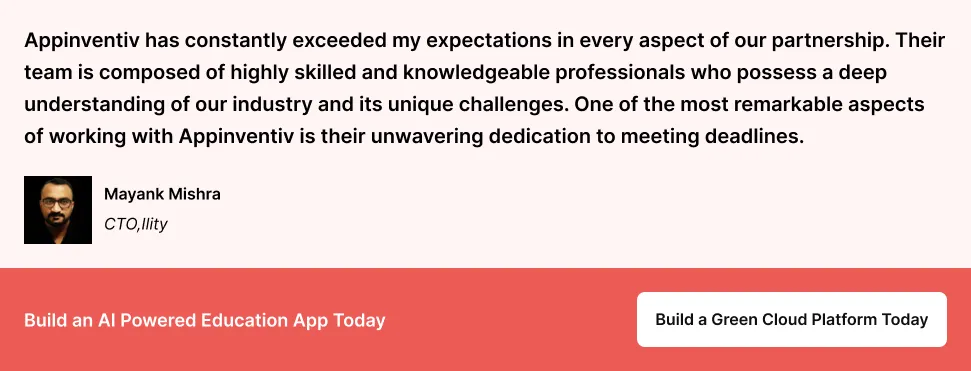- Market Trends and Analysis: The Green Revolution Taking Shape
- Understanding Green Cloud Computing for Enterprises
- Key Principles of Green Cloud Computing
- Key Components of Green Cloud Technologies
- Smart Systems Behind Green Cloud Computing
- The ESG Imperative: Why You Cannot Afford to Wait
- The Tightening Compliance Landscape
- Multiple Business Opportunities
- Sustainability Creates Competitive Advantages
- Measuring the Benefits of Green Cloud Computing for Enterprises
- Cutting Carbon Emissions with Cloud Services
- Operational Efficiency Improvements
- Financial Benefits of Green Cloud Computing
- Scalability and Flexibility
- Creating a Virtuous Cycle of Efficiency and ESG Alignment
- Use Case of Green Cloud Computing for Enterprises: Real-World Success Stories
- UEM Edgenta’s Energy Management Success
- Bharti Airtel’s Telecommunications Transformation
- Olympic Esports’ Event Analytics
- Alibaba’s Campus Operations Excellence
- Green Cloud Computing Best Practices for Your Organization
- Role of AI in Green Cloud Computing: The Intelligence Factor
- Advanced AI Capabilities for Continuous Optimization
- Predictive Maintenance for Sustainable Cloud Operations
- Generative AI for Code Refactoring
- Carbon-Aware Workload Scheduling
- Implementing Sustainable Cloud Infrastructure: Your Roadmap to Success
- 1. Assess Your Current Infrastructure
- 2. Set Clear Sustainability Goals
- 3. Choose the Right Cloud Development Company
- 4. Modernize and Operate
- 5. Monitor, Measure, and Optimize
- 6. Engage Stakeholders and Promote Transparency
- 7. Innovate Continuously
- Measuring Success: Metrics That Matter for Cloud Efficiency and ESG Alignment
- The Future of Green Cloud Computing: What Lies Ahead
- Taking Action: Your Next Steps Toward Sustainability
- How Appinventiv Helps You with Your Green Cloud Transformation
- FAQs
- Adopting green cloud solutions lowers energy consumption, cuts emissions, and reduces operational costs.
- Companies like UEM Edgenta and Bharti Airtel have seen measurable improvements in sustainability and efficiency.
- AI Enhances Green Cloud Efficiency. AI optimizes energy use, predicts demand, and minimizes waste in cloud infrastructure.
- Your Green Cloud Roadmap. Start with an infrastructure assessment, set clear goals, and continuously monitor for optimization.
Businesses these days face increasing pressure to meet sustainability goals while driving both environmental impact and business growth. This is where green cloud computing for enterprises comes in. Cloud computing sustainability helps large enterprises reduce their carbon footprint while staying competitive in a fast-evolving market.
But your current IT setup is probably not helping you meet your sustainability goals. Legacy on-premise infrastructure acts as a bottleneck for modern ESG compliance. They burn through electricity and pump out carbon emissions. For the modern CIOs, the mandate is paradoxical: scale infrastructure capabilities indefinitely while driving the corporate carbon footprint toward zero.
Sustainable cloud solutions change everything. You get advanced technology that’s also good for the planet. And yes, it actually makes money. But how does this work in practice? Let’s uncover the applications and advantages of green cloud computing for enterprises in this blog.
Here, we’ll explore how cloud adoption is helping enterprises achieve their Environmental, Social, and Governance (ESG) goals and how to do it right. But first, let’s get a quick glimpse at the current market trends to understand where the green revolution stands.
Must Read: Mastering Multi-Cloud Strategy for Business Growth
Turn your traditional data centers into sustainability powerhouses. Get expert guidance on green cloud migration.
Market Trends and Analysis: The Green Revolution Taking Shape
The data indicates a massive capital pivot. The global green data center market is not just growing; it is becoming the standard for infrastructure investment. Projections indicate the market will surge from 28.02 billion in 2024 to 80.43 billion by 2030, growing at a CAGR of 19.2% from 2024 to 2030.

The momentum is building fast across all sectors. By 2027, sustainability will become a performance metric for 80% of chief information officers. That means your IT decisions today will directly impact your career tomorrow. The pressure is immediate and comes from three distinct vectors:
- The Regulatory Vise: From the EU’s Corporate Sustainability Reporting Directive (CSRD) to the SEC’s climate disclosure rules, non-compliance is becoming a legal risk.
- Capital Access: Institutional investors are increasingly auditing the ESG credentials of their portfolios. High carbon intensity is beginning to equate to high investment risk.
- The Efficiency Correlation: There is a direct linear relationship between carbon efficiency and cost efficiency. A wasted CPU cycle is both a carbon emission and a wasted dollar.
The emphasis on cloud computing is reshaping vendor evaluation criteria across industries. This trend isn’t slowing down; it’s accelerating as more organizations realize that sustainable approaches deliver both environmental and financial benefits simultaneously.
Understanding Green Cloud Computing for Enterprises
Green cloud computing for enterprises is the practice of designing, building, and operating digital infrastructure to minimize environmental impact. However, distinct from general “eco-friendly” tech, enterprise green cloud focuses on the entire lifecycle of the compute resource. Modern setups focus heavily on cloud computing sustainability principles that drive both environmental and operational improvements.
Key Principles of Green Cloud Computing
The concept rests on three basic principles that directly benefit your company:
- Energy efficiency maximization throughout your system lifecycle makes sure every computational cycle delivers maximum value
- Sustainable resource use includes everything from recyclable materials to renewable energy connections.
- Waste cutting strategies reduce environmental impact while often cutting operational costs
These principles form the foundation of sustainable cloud computing approaches that deliver measurable results.
Key Components of Green Cloud Technologies
Green cloud technologies cover a complete system designed to improve your operations while reducing environmental impact. This complete approach includes several key components:
- Energy-efficient data centers with advanced cooling systems that use up to 40% less energy
- Renewable energy sources powering your apps around the clock
- High-efficiency servers with improved performance-per-watt ratios
- Smart power management systems that adjust automatically to demand changes
Smart Systems Behind Green Cloud Computing
Smart systems work behind the scenes to make green cloud computing effective. Server virtualization runs multiple apps on fewer physical machines. This cuts your hardware needs way down. Dynamic resource allocation gives you exactly what you need. No more. No less. It eliminates waste from systems that are too big for the job. These methods are key cloud computing sustainability strategies. They boost efficiency and reduce environmental damage across your whole setup.
Must Read: Business Benefits of Virtualization in Cloud
The ESG Imperative: Why You Cannot Afford to Wait
Your stakeholders are watching every move you make, and their expectations have fundamentally changed. Investors increasingly use Environmental, Social, and Governance metrics to evaluate company performance and risk assessment. Here’s a fact that should grab your attention: companies with high ESG performance show lower volatility and higher operating margins.
The Tightening Compliance Landscape
The compliance landscape is tightening around you faster than many companies realize. Multiple cloud compliance requirements are creating big pressure:
- European Union’s SFDR needs complete environmental impact disclosure
- SEC climate rules require climate-related financial disclosures for public companies
- CSRD requirements are expanding to cover more companies
- Carbon pricing mechanisms are being put in place across multiple areas
Multiple Business Opportunities
Beyond compliance duties, you’re looking at real business opportunities that forward-thinking companies are already capturing. Sustainable approaches help you achieve operational excellence while building company resilience. When you improve resource usage and put in place energy-efficient practices, you often find that sustainable choices happen to be the most cost-effective choices available. The cloud computing sustainability framework gives structured approaches for reaching these dual goals.
Sustainability Creates Competitive Advantages
Your customers and employees favor environmentally responsible companies, creating competitive advantages for organizations that actively address sustainability challenges. These benefits spread across multiple dimensions:
- Enhanced brand reputation leading to improved customer loyalty and market positioning
- Access to environmentally conscious market segments that prioritize sustainable business partners
- Attraction and retention of top talent who want to work for responsible organizations
- Competitive differentiation in increasingly crowded markets where sustainability becomes a deciding factor
By adopting green cloud technologies, you signal commitment to environmental stewardship that resonates with modern stakeholders while positioning your organization for long-term success in a carbon-constrained economy.
Measuring the Benefits of Green Cloud Computing for Enterprises
Now that you have enough reasons to go for cloud computing sustainability, let’s talk about the real world impact that businesses get from the rapid adoption of green cloud computing. After all, that’s what your bottom line cares about.
The benefits go way beyond feeling good about the environment. You get real business value you can measure, report, and take to the bank. These aren’t pie-in-the-sky benefits. They’re proven results that companies around the world are seeing right now. Here are some tangible advantages of green cloud computing for enterprises:
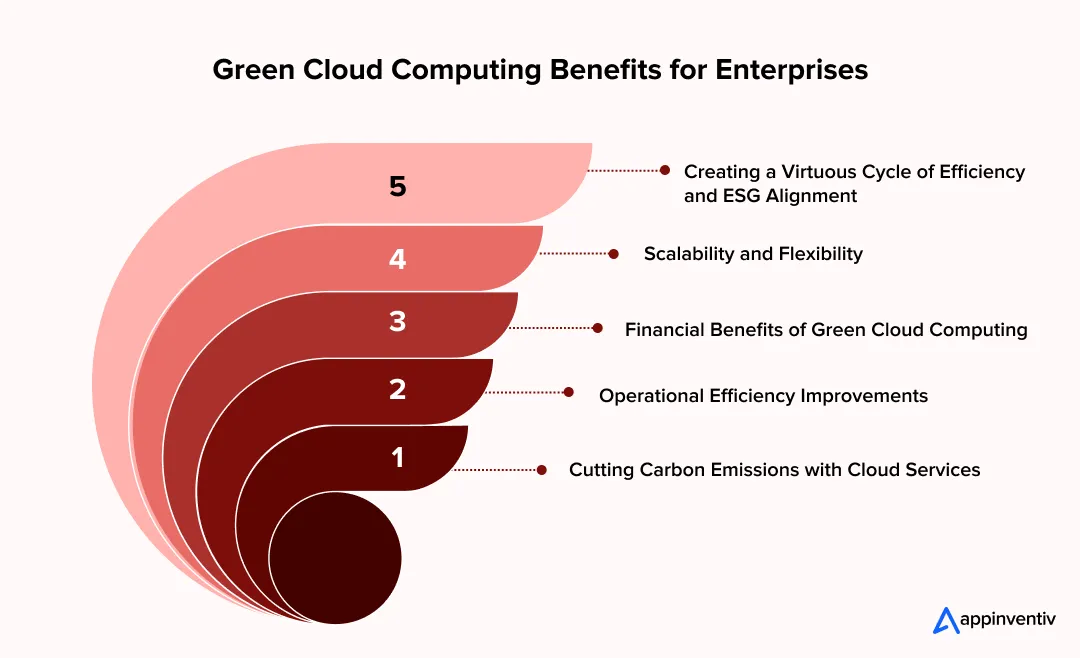
Cutting Carbon Emissions with Cloud Services
Moving to cloud services can cut your carbon emissions by up to 84% versus old-school infrastructure. Here’s how big this is. Cloud migrations could slash annual carbon dioxide emissions by 59 million tons per year. That’s like taking 22 million cars off the road.
Must Read: Why and How to Transform Legacy Systems Via Cloud Migration
Operational Efficiency Improvements
Your operational efficiency improvements deliver immediate and ongoing benefits across multiple metrics:
- AWS workloads are about 4.1 times more efficient than on-premises alternatives
- Server utilization rates improve from typical 15-20% to 65-80%
- Energy consumption per workload typically decreases by 30-50%
- Cooling requirements often reduce by up to 40% through shared infrastructure efficiencies
Financial Benefits of Green Cloud Computing
The financial benefits create compelling business cases for transformation initiatives. Companies can potentially save almost 50% in total cost of ownership when implementing comprehensive cloud strategies. These savings come from multiple sources, and the advantages of green cloud computing become even clearer when you think about the long-term operational improvements and lower regulatory compliance costs.
These cost reductions stem from several key areas:
- Reduced capital expenditure on hardware procurement and data infrastructure applications
- Lower operational costs from improved efficiency and automated management
- Decreased energy bills through optimized consumption and renewable energy integration
- Minimized maintenance expenses through shared infrastructure and professional management
Scalability and Flexibility
The benefits of green cloud computing also include better scalability and flexibility that old infrastructure just can’t match. You get the ability to scale resources up or down based on real demand, avoiding the waste linked with oversized systems while keeping performance during busy periods. Using sustainable cloud computing strategies allows this flexible approach while keeping environmental responsibility.
Must Read: Unleashing the Potential of Cloud in Digital Transformation
Creating a Virtuous Cycle of Efficiency and ESG Alignment
Cloud efficiency and ESG alignment create a virtuous cycle where environmental optimization drives operational and financial improvements. As you optimize for environmental impact, you simultaneously optimize for cost and performance, making sustainable computing a smart business decision rather than just an ethical choice.
Use Case of Green Cloud Computing for Enterprises: Real-World Success Stories
Leading organizations worldwide are already demonstrating the practical benefits of green cloud implementation. These aren’t theoretical benefits; they’re measurable results that you can achieve in your own organization with proper planning and execution.
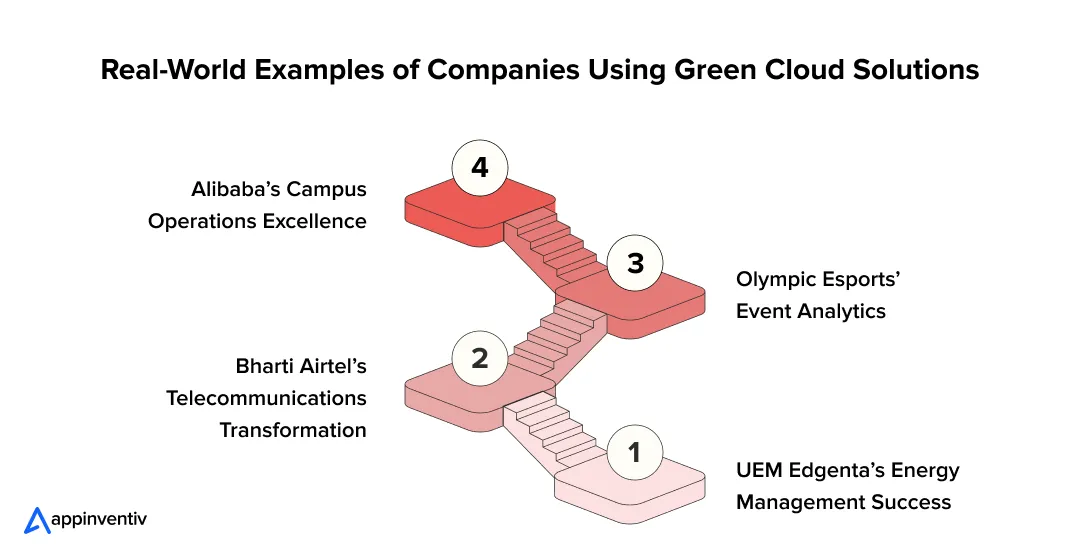
UEM Edgenta’s Energy Management Success
UEM Edgenta, Malaysia’s leading asset management company, uses Energy Expert on cloud infrastructure to monitor and optimize their carbon emissions. This sustainability software-as-a-service solution has delivered tangible benefits:
- Simplified carbon accounting processes across all operational divisions
- Reduced errors in emissions reporting through automated data collection
- Streamlined ESG strategy implementation with real-time monitoring capabilities
- Enhanced visibility into environmental impact across their entire infrastructure
Bharti Airtel’s Telecommunications Transformation
Bharti Airtel strengthened its green energy footprint by contracting a 21 MW solar power unit, leading to a decrease in carbon emissions by 25,517 tonnes annually. Their approach demonstrates how you can combine cloud services with renewable energy initiatives for maximum impact through strategic renewable energy procurement and cloud infrastructure optimization.
Related Read: Accelerate Your Energy Transition with Smart Software Solutions for Sustainable Infrastructure
Olympic Esports’ Event Analytics
The Olympic Esports Week provides another compelling use case of green cloud computing for enterprises. Event organizers deployed Energy Expert to measure and analyze carbon emissions from temporary construction, generating data-driven insights on material and equipment choices. This real-time approach delivered multiple benefits:
- Optimized environmental impact during planning phases through predictive analytics
- Data-driven material selection based on carbon footprint calculations
- Enhanced stakeholder confidence through transparent environmental reporting
- Demonstrated environmental responsibility to global audiences and sponsors
Alibaba’s Campus Operations Excellence
Alibaba Cloud Valley Campus reduced energy consumption by around 26% in summer and 10% in winter using AI algorithms for energy optimization. Their experience demonstrates practical applications including AI-driven heating and cooling optimization, smart lighting systems, and predictive maintenance reducing equipment waste.
These real-world examples show how use case of green cloud computing for enterprises works across every industry. Manufacturing companies use IoT sensors linked to cloud platforms to watch equipment energy use in real-time. Financial services firms use cloud-based analytics to check the environmental impact of their investment portfolios while cutting their own operational footprint through going digital.
UEM Edgenta simplified ESG reporting. Bharti Airtel cut 25,517 tonnes of emissions. What will your green cloud success story be? Write an inspiring one today with our cloud experts.
Green Cloud Computing Best Practices for Your Organization
Adopting green cloud computing best practices for your organization requires a shift in architectural thinking, not just a change in hosting providers. For software leaders, the goal is to decouple business growth from carbon intensity by embedding sustainability into the software development lifecycle (SDLC). Success isn’t about buying offsets; it’s about engineering efficiency.
- The Software Carbon Audit (Assessment Phase) Before writing a line of new code, you must understand the carbon cost of your current legacy stack. Monolithic applications often hoard resources.
- Identify “Zombie” Workloads: Locate underutilized virtual machines and always-on servers that deliver zero value but consume 100% energy.
- Measure Software Carbon Intensity (SCI): Establish a baseline metric that correlates carbon emissions per user transaction or API call.
- GreenOps & FinOps Integration Sustainability and cost are practically synonymous in the cloud. By integrating GreenOps with your financial operations, you treat carbon as a budget line item.
- Price of Carbon: Factor in the “carbon cost” when selecting cloud regions.
- Rightsizing: Use automated scripts to aggressively downscale resources that are over-provisioned, ensuring you only pay (and pollute) for what you use.
- Carbon-Aware Architectural Choices When selecting a cloud environment, the hardware is the provider’s responsibility, but the configuration is yours.
- Region Selection: Deploy workloads in regions with low carbon intensity (e.g., regions powered by hydro or wind) rather than the default region.
- Ephemeral Computing: Prioritize serverless and containerized architectures (Kubernetes). These scale to zero when idle, eliminating the energy waste associated with always-on infrastructure.
- Application Optimization & Refactoring This is where Appinventiv’s expertise drives value. “Lift and shift” migrations rarely save energy. True efficiency comes from refactoring.
- Language Efficiency: Where high performance is critical, consider compiling languages (like Rust or C++) that consume far less energy than interpreted languages.
- Data Minimization: Architect software to retain only necessary data, moving the rest to cold storage to reduce the energy required for disk spinning and cooling.
In short, your implementation strategy should follow a phased approach that minimizes risk while maximizing learning opportunities:
- Phase 1: Start with low-risk, high-impact applications that demonstrate value quickly
- Phase 2: Migrate core business applications with proven benefits from the pilot phase
- Phase 3: Transform remaining infrastructure systematically based on lessons learned
- Phase 4: Optimize and expand sustainable practices across all operations
Role of AI in Green Cloud Computing: The Intelligence Factor
The role of AI in cloud computing sustainability extends far beyond simple automation. It represents a fundamental transformation in how you can optimize environmental impact while maintaining peak performance.
AI-Driven Optimization for Environmental Efficiency
Modern AI capabilities enable optimization scenarios that would be impossible to achieve through manual management or traditional automation approaches. AI algorithms predict energy demand patterns and allocate resources proactively, ensuring optimal efficiency at all times. Google uses AI to improve data center efficiency by 40%, demonstrating the powerful potential of intelligent optimization that you can leverage in your own operations.
Advanced AI Capabilities for Continuous Optimization
Modern AI systems analyze vast amounts of data to optimize your cloud operations continuously through multiple advanced capabilities:
- Historical usage analysis through machine learning models identifies patterns in your resource consumption that humans would never detect
- Demand forecasting uses predictive algorithms to anticipate future resource needs with remarkable accuracy
- Workload optimization automatically shifts intensive tasks to optimal times and locations based on energy availability and cost factors
- Efficiency monitoring provides continuous analysis that identifies opportunities for improvement before they become problems
The role of AI in green cloud computing also includes automatic changes that happen without you doing anything. For instance, load balancing smartly spreads workloads across available resources to boost efficiency. Energy management systems automatically change power use based on real-time demand and renewable energy availability. Performance tuning gives ongoing optimization that keeps peak efficiency without hurting user experience.
Predictive Maintenance for Sustainable Cloud Operations
Predictive maintenance is one of the most useful ways AI helps sustainable computing. AI-powered systems stop problems before they hurt your operations through equipment watching, failure prediction abilities, maintenance scheduling optimization, and lifecycle management that gets the most hardware value.
Generative AI for Code Refactoring
Modern Gen AI tools can scan millions of lines of legacy code to identify inefficient loops, memory leaks, and bloated libraries. By automatically suggesting optimized syntax, Generative AI in business reduces the computational power required to run the software, lowering the application’s overall energy footprint. Key benefits include:
- Dynamic workload distribution prevents data centers from overworking during peak demand
- Off-peak optimization shifts computationally intensive tasks to times when renewable energy is abundant
- Cross-regional balancing optimizes workloads across geographic regions for maximum efficiency
- Seasonal adjustments adapt operations to energy availability patterns throughout the year
The intelligence factor means your cloud infrastructure becomes increasingly efficient over time, learning from patterns and continuously optimizing performance while reducing environmental impact. This creates compound benefits that improve month after month as the AI systems learn more about your specific usage patterns and optimization opportunities.
Carbon-Aware Workload Scheduling
Advanced AI models can now interface with energy grids. They predict when renewable energy availability (solar/wind) will peak and automatically schedule heavy, non-urgent batch processing jobs (like data backups or model training) to run during those specific windows.
Implementing Sustainable Cloud Infrastructure: Your Roadmap to Success
A cloud environment that actually supports sustainability doesn’t appear overnight. Your move toward sustainable cloud infrastructure needs careful planning and step-by-step execution that builds on proven methods while fitting your specific company needs. Success comes from building the right foundation and following a clear roadmap that cuts risk while boosting benefits.
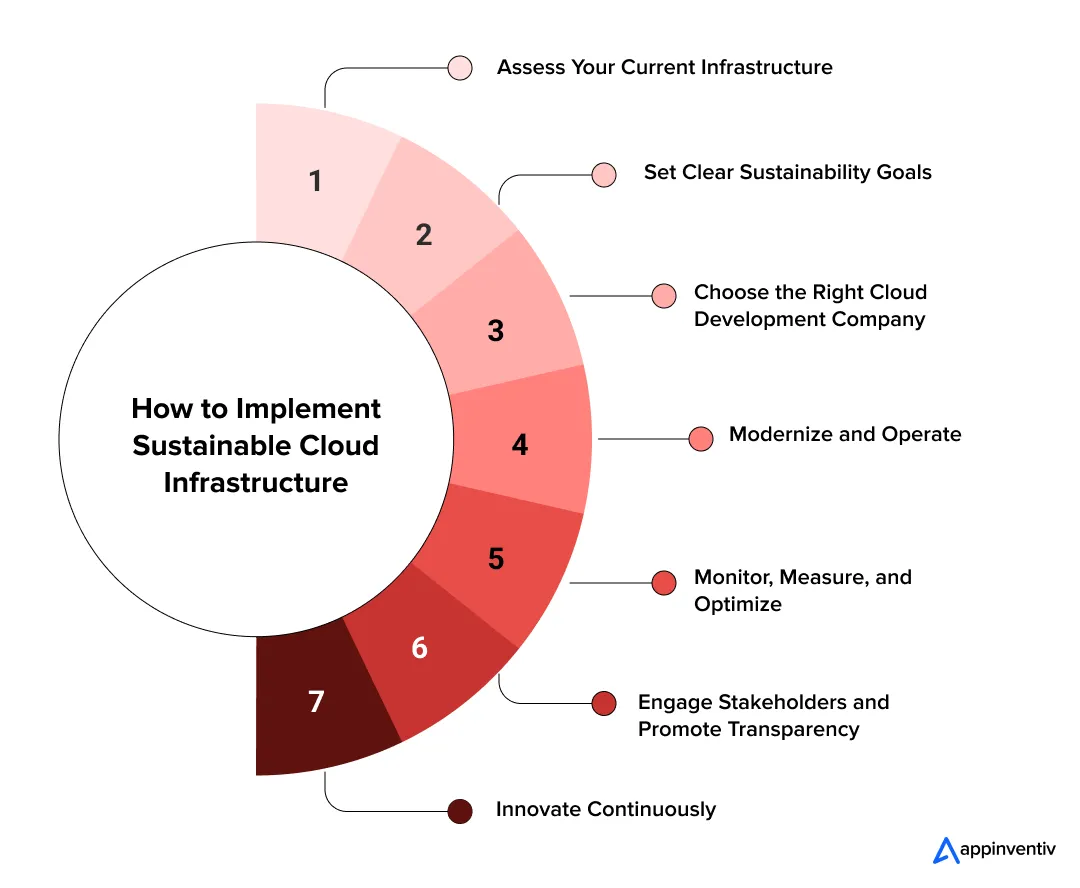
1. Assess Your Current Infrastructure
Before you even think about building something new, take stock of what you already have. Look closely at how your servers perform on a normal day, how much energy they burn through, and where resources are sitting idle. Check things like workload spikes, how often machines run under-capacity, and what your carbon footprint looks like right now. This first sweep tells you where the real gaps are.
2. Set Clear Sustainability Goals
After you understand your baseline, decide what you want to improve. Maybe it’s reducing energy waste, cutting emissions, or getting rid of unnecessary hardware. Give yourself targets that you can measure. Is it moving a percentage of workloads to renewable energy or trimming down your carbon output within a specific timeline? These goals keep you from drifting when the actual migration begins.
3. Choose the Right Cloud Development Company
The partner you pick will make or break the process. Look for a team that actually understands green AI and cloud practices and has built sustainable setups before. You want efficient AI and cloud developers who can design around energy efficiency, not just performance.
A cloud development company like Appinventiv can help you map your goals onto the actual architecture so the final system runs smoothly and responsibly. Make sure your partner knows your sustainability requirements from day one.
4. Modernize and Operate
The next vital step is to building green cloud solutions or modernizing the existing architecture. Prioritize moving high-consumption workloads to serverless or containerized environments. Refactor the code to remove redundancies. Train your development teams on Green Software principles. Make “Carbon Efficiency” a non-functional requirement alongside security and scalability.
5. Monitor, Measure, and Optimize
Once your system is up, don’t just walk away. Track your energy consumption, server utilization, and emissions regularly. Use tools that give you real-time data so you can adjust before inefficiencies turn into bigger problems. The cloud changes constantly; your optimization plan should too.
6. Engage Stakeholders and Promote Transparency
A shift like this works best when everyone is aligned. Bring your leadership, IT teams, sustainability heads, and finance teams into the plan early. Share your goals and your progress with the people who depend on the system. Customers and investors also appreciate transparency; it shows that sustainability isn’t just a buzzword for you.
7. Innovate Continuously
Sustainability isn’t something you “finish.” New tools, better energy sources, and smarter optimization methods keep coming out. Stay open to trying new techniques whether it’s AI-driven load balancing or more efficient ways to track carbon output. Incremental improvements over time add up to a major difference.
Measuring Success: Metrics That Matter for Cloud Efficiency and ESG Alignment
You cannot improve what you do not measure. And good measurement needs a mix of technical, environmental, and business numbers that show both impact and value to different stakeholder groups. Cloud efficiency and ESG alignment depends on tracking the right signs and using data to drive ongoing improvement while building trust with investors, regulators, and customers. Here is how you can do it right:
- Software Carbon Intensity (SCI): Unlike generic carbon footprinting, SCI measures the rate of emissions per functional unit (e.g., grams of CO2 per 1,000 user sessions). This is the most accurate metric for software engineering teams.
- Cloud Unit Economics: Track the cost (and carbon) per transaction. If your user base grows by 10% but your cloud energy costs grow by 20%, your software architecture is inefficient.
- Idle Resource Percentage: A key metric for waste. What percentage of your leased cloud capacity is sitting idle? In an optimized green cloud environment, this number should approach zero due to effective autoscaling.
- Data Transfer & Network Efficiency: Moving data across the internet consumes electricity at every router and switch. Tracking “GBs transferred per user” helps identify bloated code or unoptimized media assets that are inflating Scope 3 emissions.
The Future of Green Cloud Computing: What Lies Ahead
The future of green cloud computing offers even bigger chances for environmental and operational improvements as new technologies grow and come together to create fresh possibilities. Knowing these trends helps you get ready for the next wave of sustainable technology breakthroughs while making smart decisions about current investments.
Edge Computing & Data Gravity
Instead of sending massive datasets to a central cloud (burning energy on bandwidth), future architectures will process data at the “Edge”; on the device itself. This reduces latency and drastically cuts the energy cost of data transmission.
Software-Defined Power
We are moving toward a future where applications will negotiate with the grid. Software will have “Eco-Modes”, automatically degrading non-essential features (like 4K video or high-res animations) when the local energy grid is relying on dirty power sources.
Quantum-Inspired Optimization
While true quantum computing is years away, quantum-inspired algorithms are already helping logistics and supply chain software solve complex routing problems with a fraction of the computing power required by traditional methods.
Artificial Intelligence Advancement
AI implementation in your enterprise will enable increasingly sophisticated optimization through real-time global optimization across multiple cloud regions, predictive analytics for renewable energy availability, autonomous data center operations with minimal human intervention, and integrated sustainability decision-making across all business processes.
Preparing for these developments means staying informed about emerging technologies while building flexible architectures that can adapt to new innovations. The organizations that invest in sustainable computing today will be best positioned to leverage tomorrow’s breakthroughs and maintain competitive advantages in an increasingly carbon-constrained business environment.
Taking Action: Your Next Steps Toward Sustainability
The evidence is overwhelming: sustainable cloud computing represents a critical opportunity for your organization to achieve environmental goals while improving operational efficiency and reducing costs. The question isn’t whether to adopt these technologies, but how quickly you can implement them effectively.
Immediate Actions (Next 30 Days):
- Conduct comprehensive energy audits to assess current IT infrastructure consumption
- Identify quick wins through applications ready for immediate cloud migration
- Engage stakeholders across IT, finance, and sustainability teams
- Research cloud providers based on sustainability commitments and capabilities
Short-term Implementation (3-6 Months):
- Launch pilot projects with low-risk, high-impact applications
- Invest in team training for sustainable cloud technologies expertise
- Implement measurement systems for continuous monitoring and optimization
- Establish vendor partnerships with proven sustainable cloud providers
Think about working with cloud consulting services that focus on sustainability to speed up your journey. Professional consultants bring expertise, proven methods, and risk reduction through structured approaches.
The companies that move quickly toward sustainable cloud infrastructure will get competitive advantages, including lower costs, better stakeholder relationships, and stronger resilience. Your stakeholders are ready for this change. The market conditions are good. The time for action is now.
How Appinventiv Helps You with Your Green Cloud Transformation
As a leading cloud development company with over a decade of proven expertise, Appinventiv empowers enterprises to achieve their sustainability goals through innovative green cloud solutions.
Our team of 1,600+ certified tech experts has successfully delivered 3,000+ digital solutions across 35+ industries, helping global brands transform their environmental impact while driving business growth.
Our prestigious client portfolio demonstrates our cloud excellence in action. We’ve partnered with industry giants including KFC (achieving 22% conversion rate increase), IKEA (implementing location-specific ERP solutions), Adidas (enhancing digital presence), YKA and Domino’s (boosting conversion rates by 23%).
A recent success story includes our collaboration with IliTy
Challenge: The client faced multiple operational inefficiencies including fragmented systems, complex manual workflows, under‑utilised infrastructure and lacked scalable cloud‑native architecture.
Solution Delivered: We designed and developed a white label SaaS platform which significantly boosted operational efficiency and reduced infrastructure costs.
Key Results Achieved
- 40% increase in occupancy for property portfolios managed via Ility.
- 2% increase in landlord ROI.
These partnerships showcase our ability to deliver measurable sustainability outcomes at enterprise scale. Our commitment to excellence is also validated by several industry recognitions:
- The Economic Times Leader in AI Product Engineering & Digital Transformation (2025)
- Consecutive Deloitte Technology Fast 50 Awards (2023 & 2024)
- ISO 9001:2008 Certification for quality management systems
- Clutch Global Spring Awards (2024 & 2025)
With 200+ cloud architectures designed, 250+ DevOps automations completed, and expertise spanning AWS, Azure, and Google Cloud platforms, our certified professionals deliver enterprise-grade green cloud solutions that seamlessly integrate sustainability principles with operational excellence and cost optimization.
Ready to transform your sustainability strategy through expert cloud consulting services? Connect with Appinventiv today to implement green cloud computing for enterprises that deliver both environmental impact and business value.
FAQs
Q. What is green cloud computing?
A. Green cloud computing for enterprises means using cloud services and setup in ways that help the environment. It works on cutting energy use, lowering carbon emissions, and making better use of resources through renewable energy sources, efficient data centers, and smart resource management. This approach mixes cloud tech benefits with environmental care to build sustainable IT solutions.
Q. How does cloud adoption contribute to enterprise sustainability?
A. Cloud adoption helps enterprise sustainability by bringing together IT infrastructure into highly efficient data centers, cutting energy use by up to 84% compared to traditional systems. It gets rid of the need for extra on-premises equipment, improves resource use through virtualization, and allows dynamic scaling that matches real demand, greatly reducing environmental impact.
Q. How can cloud computing support ESG goals?
A. Cloud computing helps ESG goals by giving clear environmental benefits through lower carbon emissions and energy use. It allows see-through reporting on sustainability numbers, makes remote work possible that cuts transportation emissions, and offers tools for tracking and managing environmental impact across business operations, directly helping corporate ESG objectives.
Q. How can Appinventiv help enterprises build a sustainable cloud strategy?
A. Expert cloud consulting experts at Appinventiv help companies check current infrastructure, create full migration strategies, and put in place sustainable cloud solutions. Professional consultants give guidance on green cloud technologies, best ways for optimization, and ongoing support to make sure successful change while getting the most from both environmental and business benefits.
Q. How can enterprises measure their cloud carbon footprint?
A. Companies can measure their cloud carbon footprint using provider tools like AWS Carbon Footprint Tool, Azure Sustainability Calculator, and Google Cloud Carbon Footprint tracking. These platforms watch energy use, renewable energy usage, and emissions tied to cloud services, giving detailed reports and insights for smart decision-making and progress tracking.


- In just 2 mins you will get a response
- Your idea is 100% protected by our Non Disclosure Agreement.

How Cloud Services Accelerate Product Development for Businesses
Key takeaways: Cloud product development changes the speed, cost, and risk profile of modern software delivery. The cost of cloud product development ranges between $40,000 and $400,000 or more. Cloud platforms give you instant access to AI/ML, edge computing, and advanced analytics without dropping tons of money upfront. Appinventiv supports enterprise cloud product development through…

Cloud Migration Strategy for Enterprises in Australia: Benefits, Implementation Process and Tools
Key takeaways: Cloud migration in Australia is accelerating as enterprises modernize aging systems and prepare for AI-driven workloads. Local cloud regions in Sydney, Melbourne and Brisbane make compliance and performance far easier for large-scale migrations. A strong cloud migration strategy for enterprises in Australia depends on clear assessment, the right tools and ongoing optimization. Industry…
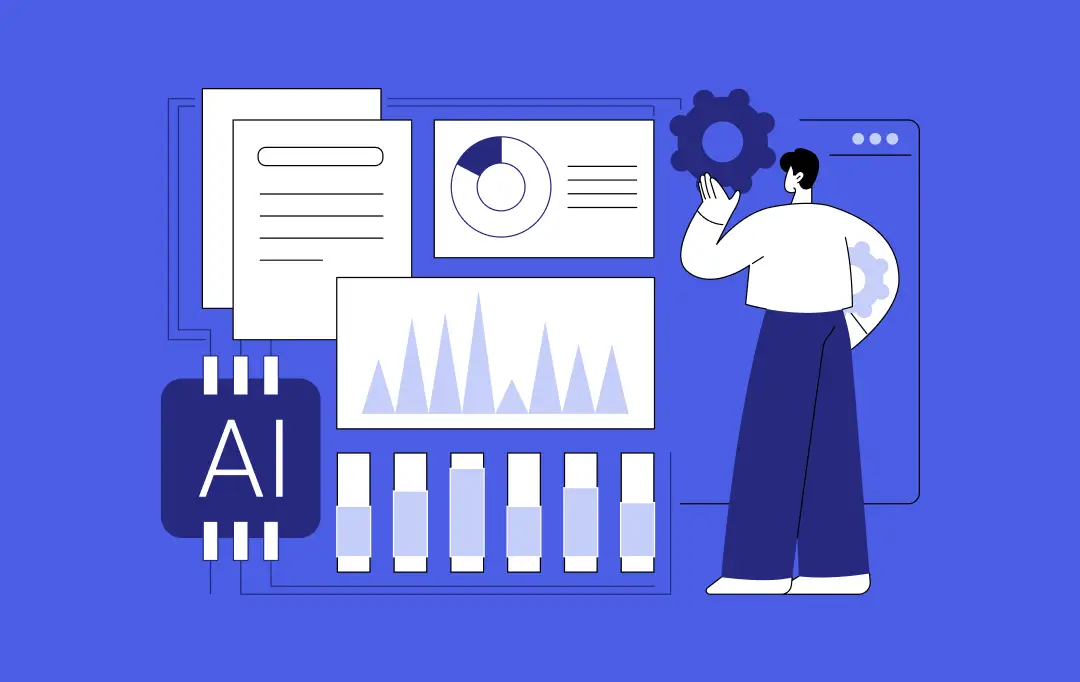
How to Ensure Data Integrity and Security During Cloud Migration?
Key takeaways: Learn how to assess risks during migration, ensuring data integrity and compliance with global standards like GDPR and HIPAA. Secure your cloud transition by implementing encryption, checksum verification, and real-time validation to maintain data accuracy. Address issues like legacy data models, schema mismatches, downtime, and third-party toolchain risks that could threaten data integrity.…
